
Keywords: vector control

|
Monitoring Aedes populations for arboviruses, Wolbachia, insecticide resistance and its mechanisms in various agroecosystems in BeninS. Ateutchia-Ngouanet, F. Nanfack-Minkeu, K. Mavridis, S. Wanji, M. Demanou, J. Vontas, R. Djouaka, Acta Tropica, 253. 2024.
The susceptibility of arbovirus vectors to insecticides and the microbiome of Aedes species are understudied in Benin. Keywords: Anopheles, gene drive synthetic, malaria, vector control |

|
Acceptability of emergent Aedes aegypti vector control methods in Ponce, Puerto Rico: A qualitative assessmentPérez-Guerra CL, Rosado-Santiago C, Ramos SA, Marrero-Santos KM, González-Zeno G, Partridge SK, et al., PLoS Global Public Health, 2024.
Aedes aegypti control has been fraught with challenges in Puerto Rico. The government has implemented commonly used vector control methods, but arboviral epidemics still occur. It is necessary to explore new Ae. aegypti control methods. This study aimed to understand the ... Keywords: Anopheles, gene drive synthetic, malaria, vector control |

|
Targeting sex determination to suppress mosquito populationsMing Li, Nikolay P Kandul,Ruichen Sun, Ting Yang, Elena D Benetta, Daniel J Brogan, Igor Antoshechkin, Héctor M Sánchez C, Yinpeng Zhan, Nicolas A DeBeaubien, YuMin M Loh, Matthew P Su, Craig Montell, John M Marshall, Omar S Akbari, eLife, 12. 2024.
Each year, hundreds of millions of people are infected with arboviruses such as dengue, yellow fever, chikungunya, and Zika, which are all primarily spread by the notorious mosquito Aedes aegypti. Traditional control measures have proven insufficient, necessitating innovations. ... Keywords: Anopheles, gene drive synthetic, malaria, vector control |
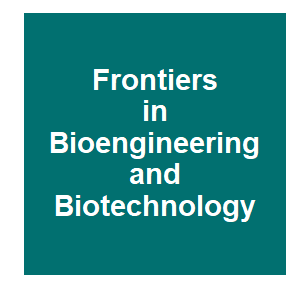
|
Stakeholder engagement in the development of genetically modified mosquitoes for malaria control in West Africa: lessons learned from 10 years of Target Malaria’s work in MaliBakara Dicko, Souleymane Kodio, Hatouma Samoura, Fatoumata Traoré, Naima Sykes, Mouhamed Drabo, Delphine Thizy, Isabelle Coche, Benjamin Robinson, Kadiatou Sanogo, Bilkissou Yagouré, Samba Diop, Mamadou B. Coulibaly, Frontiers in Bioengineering and Biotechnology, 11. 2024.
From 2012 to 2023, the Malaria Research and Training Center (MRTC), based out of the University of Sciences, Techniques and Technologies of Bamako (USTTB), was part of the Target Malaria research consortium working towards developing novel gene drive-based tools for controlling ... Keywords: Anopheles, gene drive synthetic, malaria, vector control |

|
Germline transformation of the West Nile Virus and avian malaria vector Culex quinquefasciatus Say using the piggyBac transposon systemKatherine Nevard, Rajdeep Kaur, Tim Harvey-Samuel, bioRxiv, 2023.
Culex quinquefasciatus Say is a mosquito which acts as a vector for numerous diseases including West Nile Virus, lymphatic filariasis and avian malaria, over a broad geographical range. As the effectiveness of insecticidal mosquito control methods declines, the need has grown to ... Keywords: Anopheles, gene drive synthetic, malaria, vector control |
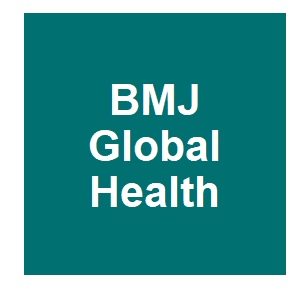
|
Utility of surveillance data for planning for dengue elimination in Yogyakarta, Indonesia: a scenario-tree modelling approachMelanie Bannister-Tyrrell, Alison Hillman, Citra Indrian, Riris Andono Ahmad, Adi Utarini, Cameron P Simmons, Katherine L Anders, Evan Sergeant, BMJ Global Health, 8. 2023.
Field trials and modelling studies suggest that elimination of dengue transmission may be possible through widespread release of Aedes aegypti mosquitoes infected with the insect bacterium Wolbachia pipientis (wMel strain), in conjunction with routine dengue control activities. ... Keywords: Anopheles, gene drive synthetic, malaria, vector control |

|
Life-history traits of a fluorescent Anopheles arabiensis genetic sexing strain introgressed into South African genomic backgroundN. L. Ntoyi, T. Mashatola, J. Bouyer, C. Kraupa, H. Maiga, W. Mamai, N. S. Bimbile-Somda, T. Wallner, D. O. Carvalho, G. Munhenga and H. Yamada, Malaria Journal, 21:12. 2022.
Background South Africa has set a mandate to eliminate local malaria transmission by 2023. In pursuit of this objective a Sterile Insect Technique programme targeting the main vector Anopheles arabiensis is currently under development. Significant progress has been made towards ... Keywords: Anopheles, gene drive synthetic, malaria, vector control |

|
Operationalizing stakeholder engagement for gene drive research in malaria elimination in Africa-translating guidance into practiceL. Pare Toe, B. Dicko, R. Linga, N. Barry, M. Drabo, N. Sykes and D. Thizy, Malaria Journal, 21:225. 2022.
Gene drive mosquitoes are increasingly considered a potential transformational tool for vector control of malaria mosquitoes. As part of efforts to promote responsible research in this field, a number of guidance documents have been published by the World Health Organization, ... Keywords: Anopheles, gene drive synthetic, malaria, vector control |

|
Recommendations for environmental risk assessment of gene drive applications for malaria vector controlJ. B. Connolly, J. D. Mumford, D. C. M. Glandorf, S. Hartley, O. T. Lewis, S. W. Evans, G. Turner, C. Beech, N. Sykes, M. B. Coulibaly, J. Romeis, J. L. Teem, W. Tonui, B. Lovett, A. Mankad, A. Mnzava, S. Fuchs, T. D. Hackett, W. G. Landis, J. M. Marshall, Malar J, 21:152. 2022.
Building on an exercise that identified potential harms from simulated investigational releases of a population suppression gene drive for malaria vector control, a series of online workshops identified nine recommendations to advance future environmental risk assessment of gene ... Keywords: Anopheles, gene drive synthetic, malaria, vector control |

|
New frontiers in vector controlWHO, World Health Organization, 2022.
Ever since Sir Ronald Ross discovered malaria parasites in an Anopheles mosquito in 1897, controlling insect vectors has played an increasingly important role in reducing the burden of the disease. For decades after World War II, indoor residual spraying (IRS) with insecticides ... Keywords: Anopheles, gene drive synthetic, malaria, vector control |

|
Genetic Stability and Fitness of Aedes aegypti Red-Eye Genetic Sexing Strains With Pakistani Genomic Background for Sterile Insect Technique ApplicationsM. Misbah-ul-Haq, D. O. Carvalho, L. D. de la Fuente, A. A. Augustinos and K. Bourtzis, Frontiers in Bioengineering and Biotechnology, 10. 2022.
The mosquito species Aedes aegypti is the primary transmitter of viruses that cause endemic diseases like dengue in Pakistan. It is also a cause of other vector-borne diseases like yellow fever, Zika fever, and chikungunya, which significantly impact human health worldwide. In ... Keywords: Anopheles, gene drive synthetic, malaria, vector control |
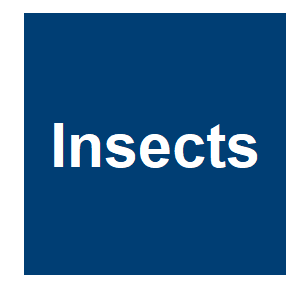
|
Sterile Insect Technique in an Integrated Vector Management Program against Tiger Mosquito Aedes albopictus in the Valencia Region (Spain): Operating Procedures and Quality Control ParametersC. Tur, D. Almenar, S. Benlloch-Navarro, R. Argilés-Herrero, M. Zacarés, V. Dalmau and I. Pla, Insects, 12. 2021.
The Agriculture Department of the Valencian Region is promoting an ongoing pilot project to evaluate the efficacy of an integrated vector management program (IVM) based on the use of the SIT as the main method of control. The laboratory studies for evaluating the entomological ... Keywords: Anopheles, gene drive synthetic, malaria, vector control |

|
Thirteenth meeting of the WHO Vector Control Advisory GroupVector Control Advisory Group, WHO, 2021.
VCAG experts met virtually with product developers, innovators and researchers from 7 to 10 December 2020 for the 13th VCAG meeting. This report details the proceedings and outcomes of the meeting, including advice provided to the following applicants: bait stations; lethal house ... Keywords: Anopheles, gene drive synthetic, malaria, vector control |

|
Interdisciplinary development of a standardized introduction to gene drives for lay audiencesC. E. Schairer, C. Triplett, A. Buchman, O. S. Akbari and C. S. Bloss, BMC Medical Research Methodology, 20:15. 2020.
While there is wide consensus that the public should be consulted about emerging technology early in development, it is difficult to elicit public opinion about innovations unfamiliar to lay audiences. We sought public input on a program of research on genetic engineering to ... Keywords: Anopheles, gene drive synthetic, malaria, vector control |

|
On Nonlinear Pest/Vector Control via the Sterile Insect Technique: Impact of Residual FertilityM. S. Aronna and Y. Dumont, Bulletin of Mathematical Biology, 82:29. 2020.
We consider a minimalist model for the Sterile Insect Technique (SIT), assuming that residual fertility can occur in the sterile male population. Keywords: Anopheles, gene drive synthetic, malaria, vector control |

|
Mosquito-Borne Diseases Emergence/Resurgence and How to Effectively Control It BiologicallyH. Dahmana and O. Mediannikov, Pathogens, 9:26. 2020.
Deadly pathogens and parasites are transmitted by vectors and the mosquito is considered the most threatening vector in public health, transmitting these pathogens to humans and animals. We are currently witnessing the emergence/resurgence in new regions/populations of the most ... Keywords: Anopheles, gene drive synthetic, malaria, vector control |

|
Opinions of key stakeholders on alternative interventions for malaria control and elimination in TanzaniaM. F. Finda, N. Christofides, J. Lezaun, B. Tarimo, P. Chaki, A. H. Kelly, N. Kapologwe, P. Kazyoba, B. Emidi and F. O. Okumu, Malaria Journal, 19:164. 2020.
Malaria control in Tanzania currently relies primarily on long-lasting insecticidal nets and indoor residual spraying, alongside effective case management and behaviour change communication. This study explored opinions of key stakeholders on the national progress towards malaria ... Keywords: Anopheles, gene drive synthetic, malaria, vector control |
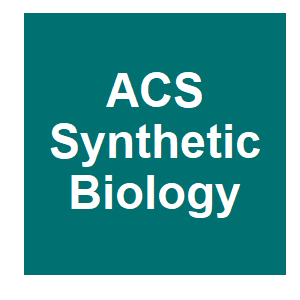
|
Engineered Reciprocal Chromosome Translocations Drive High Threshold, Reversible Population Replacement in DrosophilaBuchman, ABI, Tobin; Marshall, John M.; Akbari, Omar S.; Hay, Bruce A., ACS Synthetic Biology, 7:1359-1370. 2018.
Replacement of wild insect populations with transgene-bearing individuals unable to transmit disease or survive under specific environmental conditions using gene drive provides a self-perpetuating method of disease prevention. Mechanisms that require the gene drive element and ... Keywords: Anopheles, gene drive synthetic, malaria, vector control |
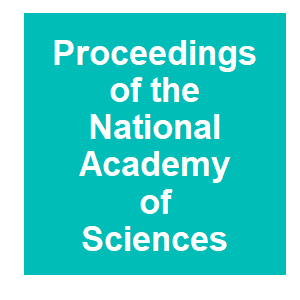
|
Requirements for effective malaria control with homing endonuclease genesDeredec, AG, H. C. J.; Burt, A., Proceedings of the National Academy of Sciences of the United States of America, 108:e874-e880. 2011.
Malaria continues to impose a substantial burden on human health. We have previously proposed that biological approaches to control the mosquito vector of disease could be developed using homing endonuclease genes (HEGs), a class of selfish or parasitic gene that exists naturally ... Keywords: Anopheles, gene drive synthetic, malaria, vector control |

Contact
David O’Brochta
Foundation for the
National Institutes of Health
geneconvenevi@fnih.org
RSS

